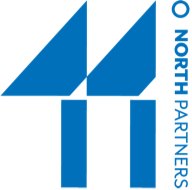Being a bright-eyed 22-year-old with $800 in graduation money, I threw caution to the wind and headed to Phoenix because I had been there once, loved the winter weather and believed the sprawling layout would make driving less stressful than it would be in the Twin Cities. Yes, those were my actual reasons for moving across the country with no friends or family. (And maybe just a little bit of curiosity to see if I could make it on my own.)
As it turned out, while my reasons for moving were impossibly naïve, the eight years I spent in Arizona were invaluable in shaping who I am today. I made wonderful friends and learned about cultures different from my own northern Minnesota upbringing. After a lengthy, character-building job search, I fell into a respectable pattern of hard work and advancement at the Phoenix Zoo that continued when I returned to Minnesota in 1999, finally brave enough to tackle those stressful Twin Cities freeways.
After almost nine years at the Phoenix Zoo, I spent 16 at Target Corporation. Without question, I learned and grew and changed throughout all those years – I don’t regret any of them. But what I now know is that I became “comfortable.” Once we get inside an organization, it doesn’t take long to figure out what’s expected and work to deliver on that expectation to “succeed.” To adapt to the norms of the culture and take comfort inside them. It becomes harder to throw caution to the wind and take bold leaps that change our life path. Sure, people do it. Especially millennials (though the statistics vary on how rapidly they change jobs today). But many of us hesitate, for many different reasons.
When I decided to leave Target, my goal was to find a similar role at another organization. After 16 years with a company, that’s hardly a bold goal. But it felt bold because I’d been there – comfortably – for so long. Working hard, slurping the Kool-Aid and making some of the best friends of my life.
When I started my job search, I quickly realized that finding a similar role at another organization, while entirely logical and in keeping with my respectable pattern of hard work and advancement, wasn’t the right next step. Instead, I took a leap and joined a former colleague to build a small communications firm. And of all the lessons I’ve learned during the past few years as a consultant, saying yes and being open to new ideas has had the biggest impact.
As Susie Moore wrote in 2014 on Huffpost Blog, “Yes leads to more doors, and no is often closing the door.” What strikes me about that phrase is what’s implied but not said: we can never know what we’re closing the door to when we say no. The only way to find out what’s behind the door is to go there. To say yes.
When you run your own consulting practice, business development is all about saying yes – to meeting new people, to attending new events, to exploring interesting ideas developed by others and incorporating those ideas into your own thinking. Saying yes is simply being curious.
Research shows that when we are curious, the limbic reward system in our brain illuminates and we increase our ability to learn and retain information. A 2002 University of Buffalo study concluded that the degree to which we are curious correlates with our level of openness to personal growth opportunities and our ability to connect with other people.
While I’ve always been naturally curious, I didn’t understand the power of saying yes until I became a consultant. At 44 Degrees North Partners, we believe inspiration can come from anywhere, and that every connection is a chance to learn something new. Every time we say yes in our business, we take note of what we learn. It’s not always earth-shattering (though sometimes it is), but it is fascinating to connect the disparate threads of inspiration, large and small, that come from curiosity and saying yes to new people and experiences.
When we focus on yes, our world gets bigger. Invisible connections become visible. Patterns emerge. Ideas form. We learn and grow. (Side note: In his book, If I Understood You, Would I Have This Look on My Face?, Alan Alda explores “Yes And,” the fundamental rule of improv. Interesting stuff to help teams collaborate and innovate.)
My advice is simple, and you don’t have to move across the country or start your own business to do it: Start saying yes to more opportunities – especially to the hard things, the ones that give you butterflies. And start saying no more often to the easy things, the familiar ones that don’t scare you at all. No matter where you work or what you do, there is something to learn behind every new door.
